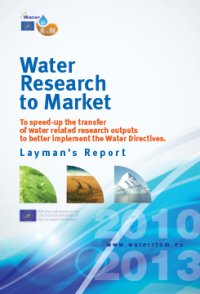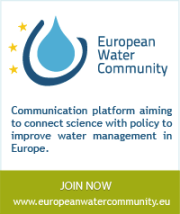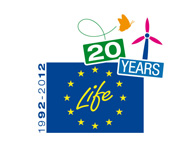GNIEZNO
| Output characterisation | |
| OUTPUT SENTENCE | Recultivation of Jelonek and Winiary lakes in Gniezno by inactivation of phosphorus in bottom sediments |
| OUTPUT TYPE | prototype |
| WATER TOPIC | Quality of natural systems |
| KEYWORDS | Lakes management, eutrophisation, treatement |
| KEYWORDS TYPE | Treatment |
| MARKET NEED TAILORED | Chemical precipitation of phosphorus with coagulants reduces the amount of nutrients and thereby reduces the intensity of the development of algae, resulting in improved water quality and increase its transparency. Phosphorus inactivation method is already used on the various reservoirs, but the method of inactivating phosphorus in bottom sediments and the supporting work is an innovation. When using the vessel called Proteus does not need protection to the area storing sediments (no problem of smell!). Reclamation work is conducted from the surface of the water, without any risk for the environment and are safe for biological life. This method is especially recommended for shallow lakes. This is the only method at the world scale recommended to reclamation of lakes located in the city center. Corresponds to the Water Framework Directive (2000/60/EC) requires. |
| OUTPUT DESCRIPTION | The surface module is responsible for moving the whole vessel and control the work of the underwater module. The underwater module is responsible for triggering controlled resuspension of sediments in its own closed space, as well as for oxygenating the sediments and applying a substance which blocks phosphorus in bottom sediments. |
| STATE OF DEVELOPMENT | Finished |
| INNOVATIVE ASPECTS AND ADVANTAGES | The method involves blocking (inactivation) of phosphorus directly in bottom sediments, using appropriate chemical substances (coagulants), which results in decreased amounts of phosphorus available in the water to, e.g. Cyanophyceae algae or phytoplankton algae, which could generate water blooming. In the recultivation process the important variables included site of coagulant dosing and induction of artificial resuspension of bottom sediments. Such activities allowed for a penetration of the dosed chemical substances into the outer layer of the sediments, the most active layer in the process of the inner feeding and, thus, participating in circulation of biogens, including phosphorus, between the sediments and water. Apart from trapping the phosphorus already present in the sediments, the procedure of administering chemical compounds directly to bottom sediments permits to improve their condition: the sediments may recover or increase their ability to store phosphorus and, in this way, reduce concentration of phosphorus in the water controlling its level in longer periods of time. The method affects the dynamics of phosphorus circulation in the container. |
| INTELLECTUAL/INDUSTRIAL PROPERTY RIGHTS | PROTE Technologies for our Environment, Ltd. , Pozna, Poland ( PROTE Technologie dla ?rodowiska Sp. z o.o.) PROTEUS has been registered by Inland Navigation Office, Poland (Urzdeglugi ródldowej) and at the same time has been approved by National Labor Inspectorate. |
| POTENTIAL USERS/CLIENTS | Lake managing |
| BUSINNESS CASE | Yes |
| Estimation of risks | |
| Steps ahead | |
| NEXT STEPS TO ACHIEVE THE STATUS 'READY TO USE' | Expansion to new areas |
| TYPE OF PARTNER FOR THE NEXT DEVELOPMENTS | Not applicable |
| TASKS TO BE PERFORMED | International dissemination of the Project |
| Estimation of ressources | |
| RESOURCES FOR NEXT STEPS | Financial resources for expansion process |
| Contact | |
| TECHNICAL CONTACT | PROTE Technologie dla ?rodowiska Sp. z o.o. / PROTE Technologies for our Environment, Ltd. *ul. Nieszawska 1, 61-021 Pozna?, Poland, tel. +48 61 654-55-70, fax +48 61 654-55-79 *environmental specialist: Mr. Adrian Szulczewski, mob. +48 606 145 325, a.szu |
| COUNTRY | POLAND |
| WATER RTOM CONTACT | GWF |
| Background | |
| PROJECT ACRONYM | GNIEZNO |
| PROJECT DESCRIPTION | The surface module is responsible for moving the whole vessel and control the work of the underwater module. The underwater module is responsible for triggering controlled resuspension of sediments in its own closed space, as well as for oxygenating the sediments and applying a substance which blocks phosphorus in bottom sediments. |
| LEADER | Gniezno Town, Poland |
| COUNTRIES INVOLVED | POLAND |
| PROJECT LOCATION | EU |
| FUNDING ORGANISATION | LIFE + Programme, LIFE07 ENV/PL/000605 |




